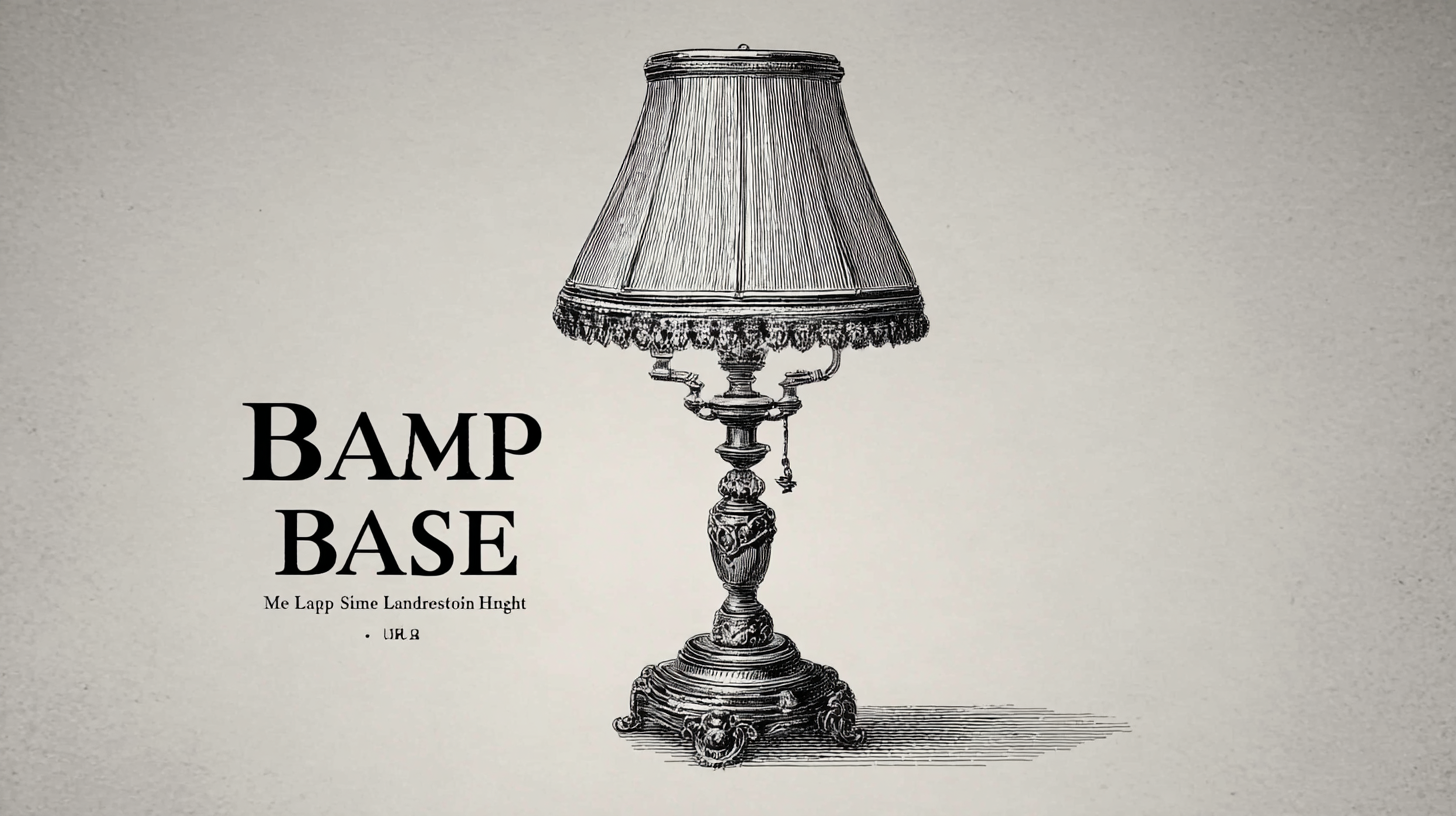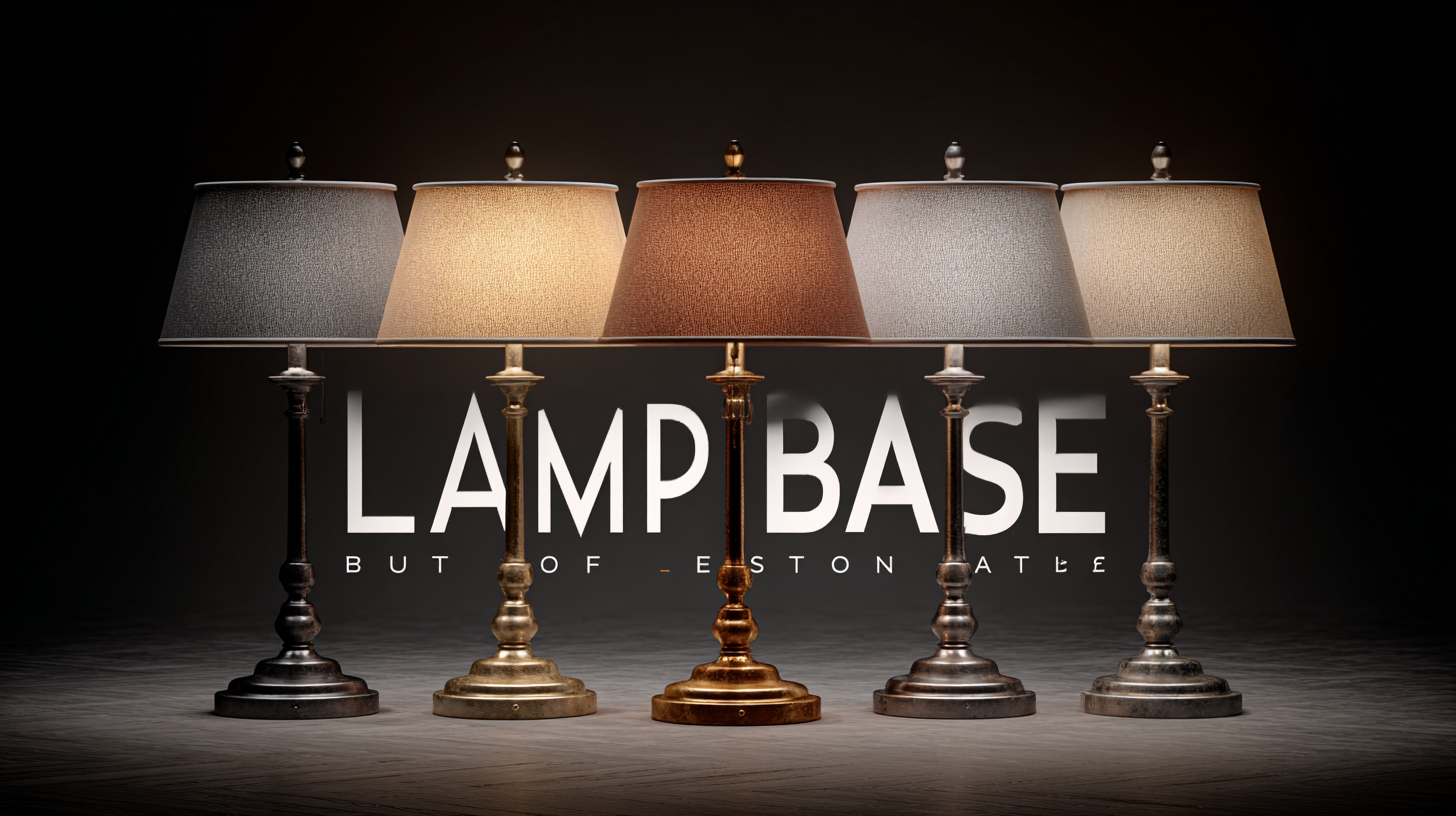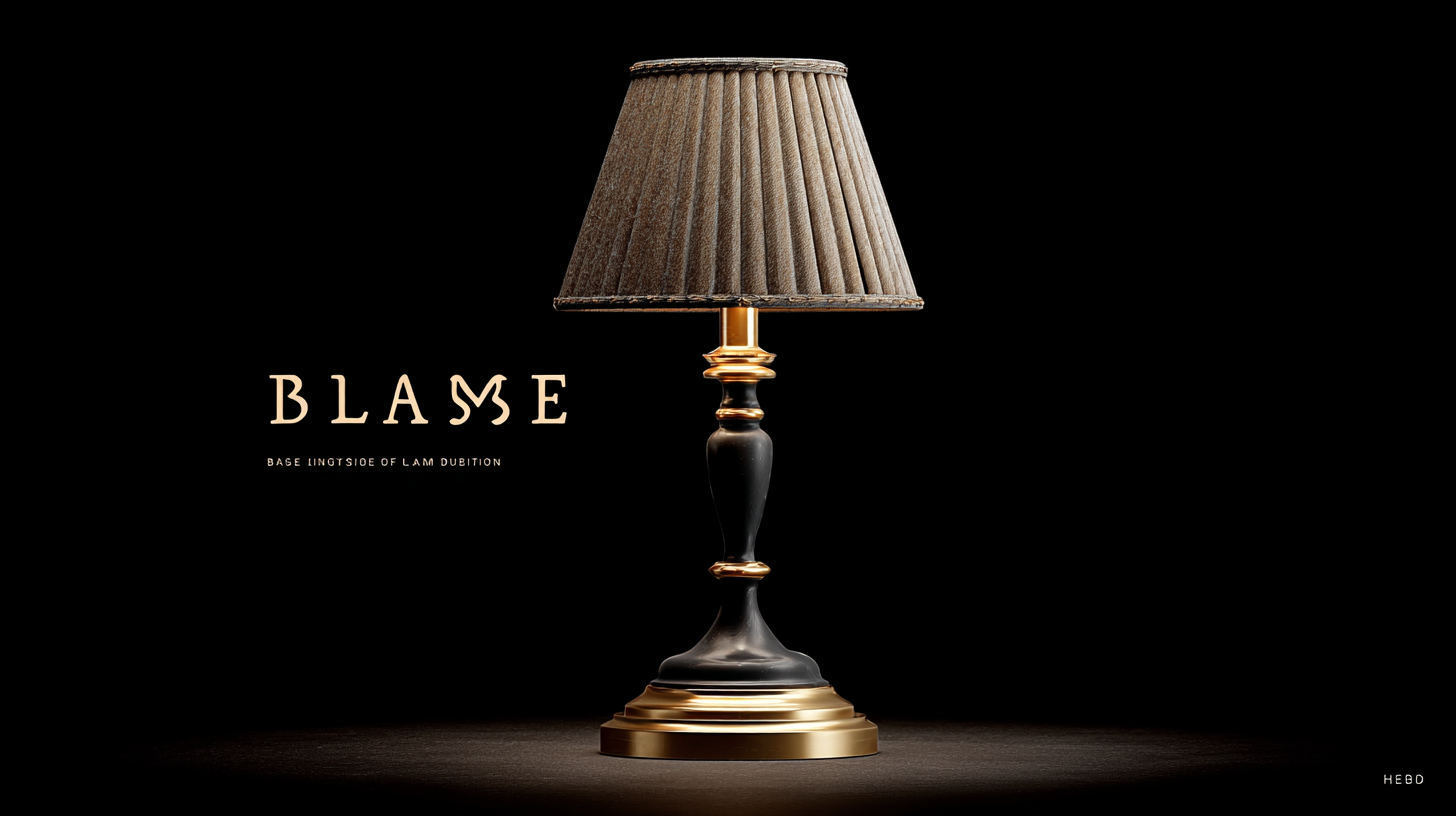In the realm of modern home lighting, the design of the lamp base has undergone a remarkable evolution, reflecting both aesthetic advancements and practical considerations. While the visual appeal of a lamp base can enhance the overall decor of a space, the importance of its functionality cannot be understated. The choice of materials, stability, and ease of replacement are critical factors that influence not only the lamp's longevity but also the associated maintenance costs. A well-designed lamp base not only complements the lampshade but also supports the function of efficient lighting. Additionally, understanding the advantages of after-sales service in the lamp base industry can significantly impact a consumer's purchasing decision. This blog will explore the transformative journey of lamp base design, highlighting its role in creating stylish, durable, and cost-effective lighting solutions for contemporary homes.

The evolution of lamp base design has seen a remarkable transformation in recent years, largely driven by the emergence of innovative materials. Traditional lamp bases were predominantly crafted from heavy metals and ceramics, lending a classic aesthetic but often lacking versatility. Today, designers are exploring a plethora of materials such as bamboo, recycled plastics, and even 3D-printed composites, allowing for a more diverse range of styles and functionalities. These advancements not only enhance the visual appeal of lamps but also promote sustainability, as many of these materials are sourced from eco-friendly practices.
Moreover, the integration of technology in lamp base design has opened up new possibilities. For instance, manufacturers are incorporating smart materials that change color or texture in response to environmental conditions. This evolution allows the lamp base to become more than just a support structure; it can now interact with its surroundings and adapt to different moods and needs. This interplay of innovation and functionality is shaping the future of modern home lighting, setting the stage for personalized designs that resonate with the contemporary aesthetic focused on both form and eco-consciousness.
In recent years, the integration of smart technology has profoundly transformed the landscape of home lighting. Smart lighting solutions, which include features such as remote control, customizable color options, and automation, have gained significant traction. According to a report by Research and Markets, the global smart lighting market is expected to reach $15.3 billion by 2023, reflecting a compound annual growth rate (CAGR) of 20.1% from 2017 to 2023. This surge is largely driven by the increase in smart home installations and the rising demand for energy-efficient lighting solutions.
The impact of smart technology extends beyond mere convenience; it also plays a vital role in enhancing energy efficiency. The U.S. Department of Energy highlights that LED lighting, a staple in smart lighting systems, uses at least 75% less energy than traditional incandescent bulbs and lasts 25 times longer. This shift not only contributes to significant cost savings on electricity bills but also supports global sustainability initiatives. With features such as scheduling and motion sensing, homeowners can optimize their lighting usage, tailoring illumination to their daily routines while minimizing wasted energy. As these trends continue to evolve, the design of lamp bases and overall lighting systems will surely adapt to accommodate the functional and aesthetic demands of modern smart homes.

As sustainability gains prominence in consumer preferences, the lamp base design industry is witnessing a transformative shift towards eco-friendly practices. According to a recent report by the International Lighting Design Association, up to 70% of consumers now prefer products that utilize sustainable materials, prompting manufacturers to explore innovative alternatives such as recycled metals and biodegradable plastics. These materials not only reduce waste but also lower the carbon footprint associated with production.
Furthermore, the commitment to sustainability extends beyond materials to include production techniques. The use of energy-efficient manufacturing processes has become standard, with companies like Tansel reporting a 30% reduction in energy consumption by adopting smart technology in their production lines. This shift not only aligns with global sustainability goals but also appeals to a growing demographic of eco-conscious consumers, combining modern aesthetic preferences with environmental responsibility. As these trends continue to evolve, lamp base design will likely reflect a balance between style and sustainability, ultimately reshaping the landscape of home lighting.
The evolution of lamp base design has significantly influenced modern home lighting aesthetics, reflecting shifting trends and consumer preferences. From the ornate, heavy bases of classical styles to the sleek, minimalist designs favored today, the journey of lamp bases illustrates a broader narrative of cultural and technological advancement. According to a report by the American Lighting Association, approximately 68% of homeowners prioritize aesthetic appeal when selecting lighting fixtures, underscoring the impact of design on consumer choices.
In recent years, the trend has shifted towards contemporary bases crafted from materials such as metal and glass, which offer both durability and a modern look. A study conducted by the International Association of Lighting Designers found that over 75% of respondents believe that the design of a lamp base plays a crucial role in enhancing the overall ambiance of a room. Designers are now blending functionality with artistry, creating bases that not only support the light source but also serve as striking decorative elements. This transformation signifies how lamp bases have evolved from mere functional components to integral parts of interior design, catering to a more discerning market.

The evolution of lamp base design is significantly influenced by changing consumer preferences and technological advancements. As we look toward 2025 and beyond, it's essential for manufacturers to anticipate these needs. According to a recent report by Future Market Insights, the global lighting market is projected to reach $174.2 billion by 2025, driven by innovations in energy efficiency and smart technology. Lamp bases that integrate IoT capabilities not only enhance user convenience but also resonate with a growing demographic that values sustainability and smart home integration.
Moreover, the shift towards personalization in home decor suggests that lamp base designs should incorporate customizable elements. The 2023 Home Decor Trends report indicates that 65% of consumers are willing to pay more for products that reflect their individual style. This implies that future lamp designs must embrace versatility in aesthetics and functionality. By providing options for interchangeable bases, finishes, and lighting styles, manufacturers can cater to the personalized preferences of consumers while ensuring their products remain relevant in an ever-evolving market. Embracing these trends will be crucial for staying competitive in the dynamic landscape of modern home lighting.
| Design Element | Material | Timestamp | Consumer Preference Rating (1-5) | Future Trends (2025) |
|---|---|---|---|---|
| Minimalist Design | Aluminum | 2020 | 5 | Sustainability Focus |
| Vintage Style | Brass | 2018 | 4 | Smart Home Integration |
| Artistic/Abstract | Ceramic | 2019 | 4.5 | Augmented Reality Features |
| Industrial Design | Steel | 2021 | 4 | Modular Components |
| Natural Elements | Wood | 2022 | 5 | Eco-friendly Materials |
